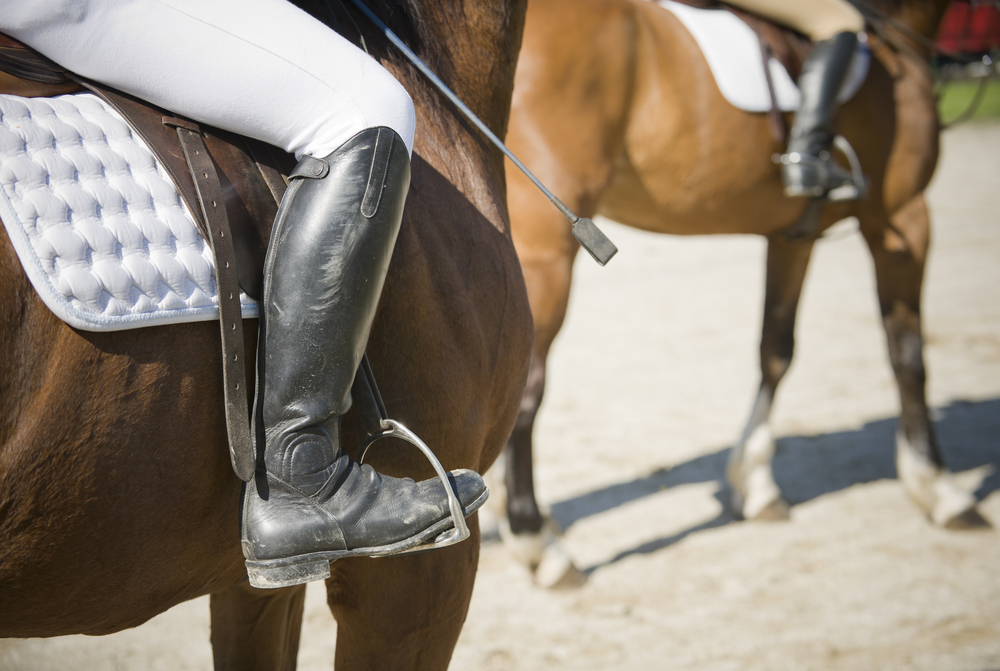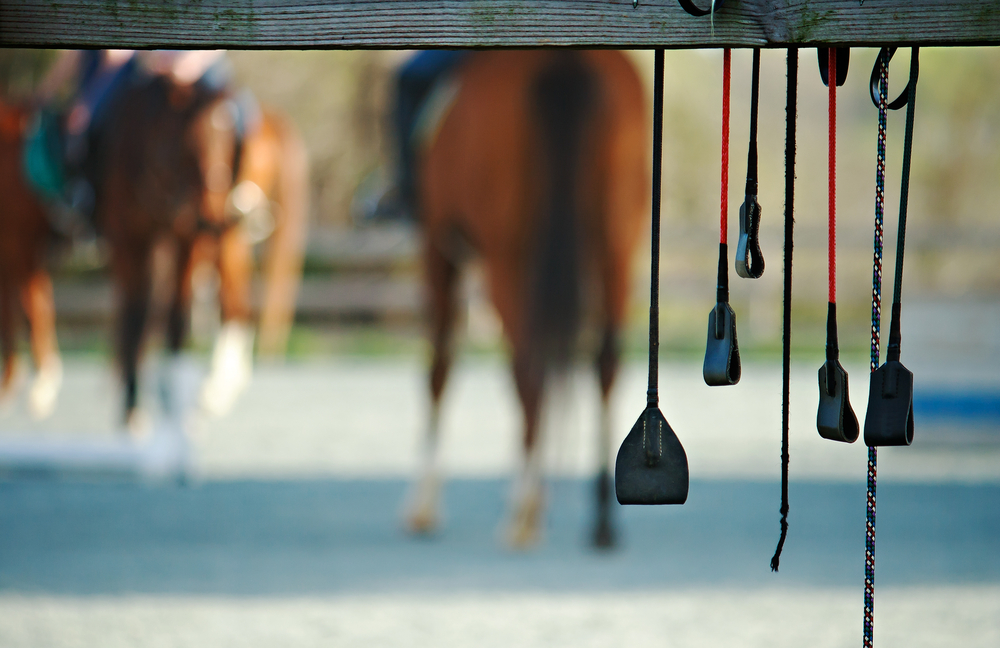
Some countries and states have imposed striking limits (even banned crops) to protect horses. In an often-quoted example, a jockey in the Kentucky Derby has allegedly whipped his horse around 32 times during the race. This enraged animal rights activists and reopened the debate on whether riding crops hurt horses. Well, do they?
Riding crops do not hurt horses. This centuries-old riding aid is meant to avoid accidents through better control over the animal. An experiment by a journalist of The Guardian Newspaper demonstrated that the modern riding crop (and even its dressage equivalent – the whip) is not designed to inflict pain.
There are two sides to any debate, and compelling arguments can be put forth for both sides. In this article, I will present some perspectives on the controversy. If you have not yet decided what your view is, this might help you reach a sound conclusion!
The “Designed not to Hurt” Argument
The main argument supporting the view that crops (and whips) do not hurt horses can be called the design argument. For this discussion, let us briefly clarify the difference between crops and whips.
A modern riding crop usually has a long shaft of fiberglass or cane covered in leather, fabric, or similar material. The term whip refers to the dressage whip. A dressage whip is longer than a crop (up to 110 cm or 43 inches, including lash or popper), allowing a rider to touch the mount’s side while keeping both hands on the reins.
The terms “whip” and “crop” are commonly used interchangeably. In this article, we will also take it to mean the same thing unless specified differently.
As for the design argument:
- In earlier years, crops were heavier, and whips were even supplemented with a little lead in the tip to give it added weight. Today’s crops are designed to be as light as possible – they can’t possibly hurt the horse.
- The thin end of a crop is intended to make contact with the horse, whilst the keeper prevents the horse’s skin from being marked. These are design features that are not meant to harm the horse.
- The length of a crop is designed to allow enough leverage for it to be accelerated rapidly with a controlled flick of the wrist, without causing the rider balancing problems. (A true crop is relatively short).
- Modern whips used in horse racing are strictly regulated to cause the least amount of pain possible. They are designed with shock-absorbent foam padding surrounding a composite spine with a thick outer covering.
Thus, the argument goes, crops are designed not to hurt. They do not hurt the horse.
The “Safety” Argument
The second argument in support of the view that crops (and whips) do not hurt horses can be called the “safety” argument.
This argument goes as follows: Crops are principally designed to back up the natural aids (leg, seat, and voice). The crop should not be used as punishment, where the animal fails to perform a wanted behavior and is hit.
This argument is backed up by the Norwegian horseracing experience, where crops have been banned since 1982 – except in 2-year old races. Experienced jockeys are adamant that the horses perform no better or worse if they do not use riding crops.
The use of crops is only allowed in races where young and inexperienced horses participate. Why? Because the crop is needed as an additional aid to prevent accidents. In the Norwegian case, this often proves to be necessary.
In the case of more experienced horses, it is not necessary.
The “But Does it Hurt?” Argument
Here we come to the crux of the matter. A journalist of The Guardian Newspaper put the matter to the test.
He volunteered to take a few lashes inflicted by a riding crop on his hand – one of the more sensitive parts of the body. A well-known jockey familiar with the force typically employed when using the crop on horses inflicted his lashes – with more force than is witnessed in races.
The journalist’s verdict:” It made a noise but did not hurt.” But is this a conclusive argument?
This also supports the view that a crop (though the noise it makes) is a supporting aid designed to control the horse (sound is often used to control a horse, as you very well know).
But if it does not hurt a human being, does it necessarily mean crop lashes do not hurt a horse? An Australian University found that human and animal skins are of comparable thickness where the sensory nerve endings are to be found – and so are the numbers of nerve endings.
From this point of view, it seems that riding crops do not hurt horses. But the debate continues from another angle. We will look at that angle in the next part of the article.

The “Empirical Study” Arguments
A study of horse jockeys’ use of whips conducted in Australia determined that:
- horses were hurt when whipped
- the use of padded whips is ineffectual.
This study examined 350 races and found that more than 80 percent of the hits left an indentation on the animal.
But even empirical studies of the matter do not bring to a conclusion the many arguments.
This is because the Australian study’s findings contrast to a study of British horse racing that found only one horse marked out of 93,000 runners in 2018!
Conclusion
Do riding crops hurt horses? Many arguments have been presented through the years – some saying they do, and others saying they do not.
Those who say they are invariable come from the ranks of animal rights activists and academic studies. Those who say they don’t invariably come from horse riders and trainers with an intimate knowledge of the horse.
What is my take on the controversy? Crops originate from a time when man and horse had to depend on one another for survival and lovingly built up an intimate knowledge of each other.
While it is not a matter of survival anymore, man’s gift of gratitude to his horse is to design modern crops and lovingly use them to avoid accidents in which both horse and rider may be hurt.
Do you agree?
